The Formaticum Difference: Custom Branding as a Marketing Tool
Good cheese is an investment, and so is good marketing. So why not protect that investment with professional cheese paper that doubles as your best marketing tool? Custom-branded cheese paper reminds your customer where they bought their cheese every time they open their fridge, while also protecting that cheese and preserving its flavor.
Here at Formaticum, we understand your needs because we have been in your shoes. The Formaticum team has a combined 20+ years of experience working in the cheese industry as mongers, buyers, caterers, importers, and more. We are problem solvers, and we are dedicated to ensuring complete satisfaction with our products and services.
Plus, it's never too early to start preparing for Q4! The current lead time for custom printed product is 12-14 weeks, so now is the time to start the conversation to ensure you have product in-house for the holidays. If this is your first custom order, we recommend taking the time to test multiple materials to find your perfect fit, and there are typically a few weeks of conversation with the factory about your artwork before it is approved and the countdown clock starts for that lead time.
So what are the benefits of custom branded cheese paper?
1. Reinforce your brand. Your customers will remember you after they leave your store and be reminded of you every time they open their fridge.
2. Introduce your brand to new customers. When your customers share their cheese with friends or give cheese as a gift, they are spreading the word about your business and services. It's a built-in business card!
3. Elevate your presentation. Share professional-quality cheese storage with your customers by providing them with sleek European packaging that keeps their cheese tasting fresher, longer. Watch our wrapping tutorials to elevate your techniques and service!
4. Include a variety of information. We can print logos, graphics, maps, text, and even QR codes onto custom branded cheese paper and bags.
5. Expand your reach with other customizable products. We can print your logo on almost any item in our catalog, including retail Cheese Storage Bags & Sheets, Cheese Signs, Professional Cheese Knives, and Cheese Log Books.
6. Maximize the minimum. Our custom-branded products have minimum order quantities, but you can customize your pack-offs by splitting the MOQ between bulk product, co-branded retail packaging, ecomm-optimized flat packs, and more to help you move product in the best way for your business.
7. Minimize stress. We recommend that you order one year's worth of paper at a time, ensuring that you always have a new case to open and never have to worry about your favorite material being out of stock. Running low on storage space? Don't worry - as a value added service, we will store your order in our warehouse and ship cases to you on demand as you need them.
Why work with Formaticum?
Simply put, we handle all the details so that you can focus on the cheese.
- We provide timely, thorough & effective communication through the entire process.
- We keep freight costs reasonable by filling whole containers before shipping.
- We assume all risk for any damaged cases - you are only invoiced for what you receive.
- We handle all international shipments, all customs and duties, and all FDA paperwork ourselves.
- We offer an easy invoicing process with no hidden fees (one price per case + shipping costs from our NY warehouse).
- We can bill your shipping accounts to eliminate further invoicing.
- We can split an order and ship directly to multiple locations.
- We will customize a reorder plan with you to ensure you never run out of paper.
Honor the cheesemakers - save your cheese with Formaticum professional cheese storage products.
Email wholesale@formaticum.com with custom branding inquiries.
Meet Your Mongers: International Women's Day
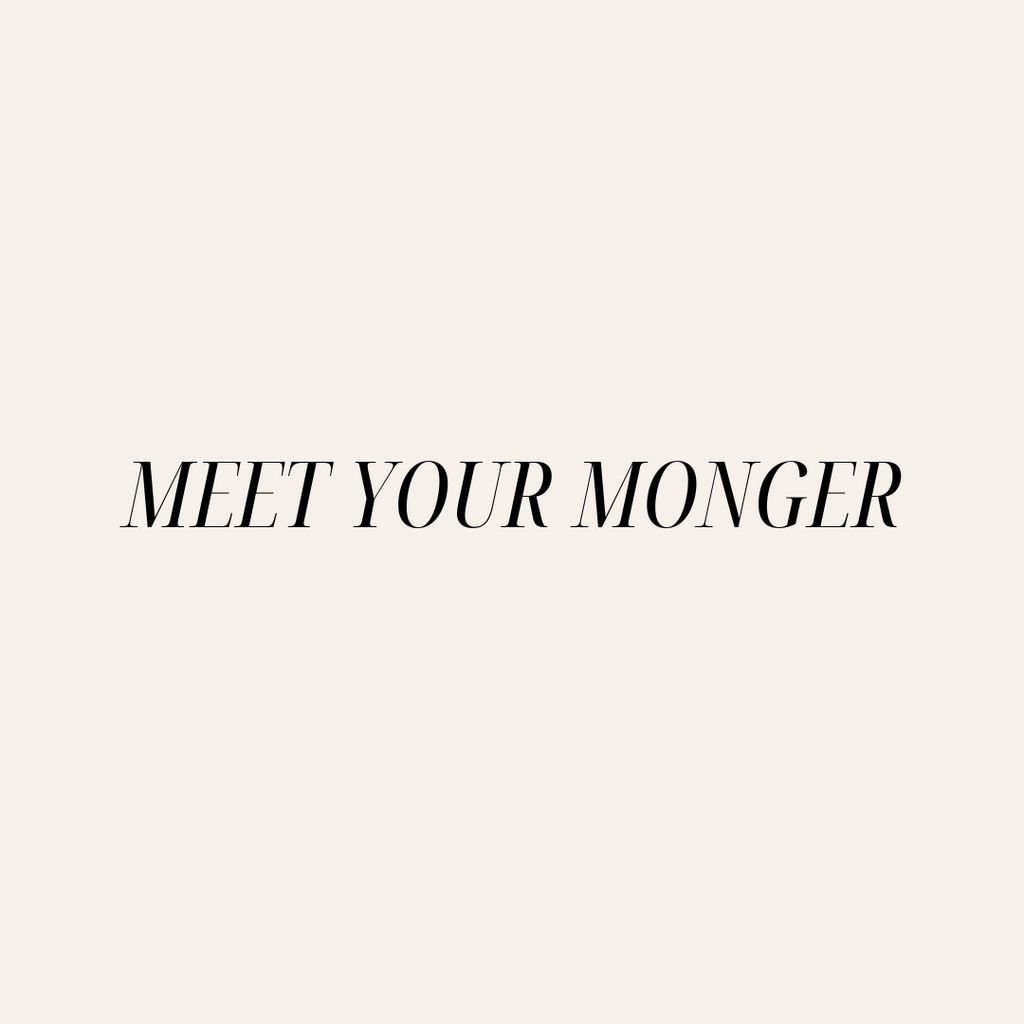
Women are and always have been inherently connected to cheese. Cheesemaking was traditionally a woman's task, as evidenced by written record as well as historic recipes - for example, some of the earliest cheddar-style recipes were very forgiving and included a long, slow acidification to allow for the cheesemaker to accomplish other tasks during the day. Many families owned a few cows and women were responsible for milking them and turning that bit of milk into cheese, the ultimate value-added product. The blueprint for many homes and creameries included a make room that was connected to the kitchen so that the cheesemaker could keep an eye on the vat while working on other things. The invention of Camembert is credited to Marie Harel, and the artisan cheese renaissance in the United States would not have been possible without the Goat Ladies of the 80s, a group of goat farmers who began making French-inspired chèvre and changed the landscape of the American cheese scene forever. Today, women all over the world and from diverse backgrounds work hard to both uphold this legacy and create their own - from cheesemakers to affineurs, educators to importers, farmers to buyers, women continue to be integral to the cheese industry, now more than ever.
In honor of International Women's Day, the March edition of Meet Your Monger highlights not one, but four women in cheese who we believe deserve recognition for their hard work and contributions to the cheese industry. We spoke with them about their career paths, their advice for cheese consumers, and why they all chose Formaticum products for their business and personal use.

Mary Casella is a New York-based cheesemonger and educator and has been working in cheese for 9 years. She is a manager of the Central Market at Tin Building in Manhattan and has worked hard to shape and refine the cheese and charcuterie selection. In 2021 Mary was the inaugural recipient of the Daphne Zepos Research Award and she continues to champion and highlight the work and impact of women in the industry,

Agela Abdullah is a seasoned cheese educator who has worked with cheesemakers around the country over her 15+ years in the industry. After attending culinary school, she discovered her passion for cheese and today is the President of the Cheese Culture Coalition, a nonprofit organization that aims to promote equity and inclusion within the cheese industry by empowering BIPOC communities through education.

Vanessa Tilaka is the co-owner and Head Cheesemonger at Agnes Restaurant & Cheesery in LA, a full-service cheese shop, restaurant, and event space. Vanessa has worked in the restaurant and specialty food industry for more than 15 years and teaches classes, as well as curates a selection of cheese and other items that rotates frequently and features as many local makers as possible, focusing on products made with integrity by small producers, women, and BIPOC makers.

Amye Gulezian is currently the Specialty Foods Operations Manager at High Lawn Farm in Lee, Massachusetts, a family-owned dairy farm in the Berkshires that milks 100% Jersey cows and was started by a woman named Marjorie Wilde. Amye studied heritage breed and dairy management in France, made raw milk cheese in Indiana, and was a cheesemonger in LA before settling at High Lawn Farm. Amye's main role is to help develop value added products like cheese, butter, and ice cream, with a focus on product quality and consistency as well as relationships with customers and vendors.
What inspired you to pursue a career in cheese?
VT: I always enjoyed eating cheese but didn't really understand differences and little nuances until I started exploring the creameries of Northern California and taking cheese classes at The Cheese School of San Francisco. I became enamored with learning more about it and finding out why they're all so different but similar. I decided I wanted to move from cooking to working in cheese shops and couldn't be happier.
MC: Like a lot of people, I just stumbled upon it when I started to pursue a career in food. It didn't take me long to fall in love with mongering. I've always loved learning history through culture and my degree is in art history and photography and I feel like it all just came together. What's cheese if not history and artistry? I also love being able to share my joy of food with others and help people find their own relationship with cheese.
AA: I was a cook in Virginia when I first had my Eureka! cheese moment with a wedge of Humboldt Fog. Each kitchen I worked in from then on I made sure I was somehow involved with cheese. In 2008 I took a break from cooking and got a part-time job behind the counter at the now-closed Pastoral Artisan Cheese, Bread, & Wine. Next thing I know, it’s going on 16 years and I’m still passionate about the industry
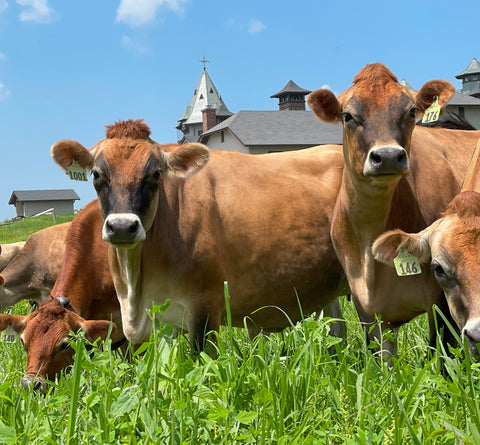
Overall, I think cheese is such a fascinating food. From it originally being a food of peasants as a way to preserve all the nutrients of milk. Every culture has their own types of cheeses that were 'developed' to be most ideal for their climate, animals, and population. I think that should remain the core of everything we do. Cheese is endless and is for everyone.
How do you use Formaticum products in your business or at home?
VT: We definitely love that Formaticum offers sustainable options for wrapping cheeses, we use Formaticum Zero to wrap cheeses for take-home. We sell Cheese Storage Bags in the shop for ease so guests feel confident in keeping their cheeses fresh without having to fold origami.
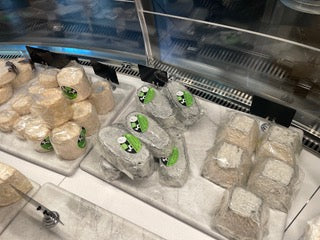
MC: I’ve used Formaticum cheese paper almost everywhere I’ve worked. The different sizes and styles make it easy to get a nice clean wrap and you know that when you send someone home with their cheese it’s going to stay in the best shape it can. At Tin Building we use the White Two-Ply for our cuts, both hard and soft cheeses. We use the Perforated Cellophane for our small formats, which allows them to breathe without drying out, and makes it easy to just hand them off to our customers.
AA: I’m always trying new cheese, or buying my favorites so my fridge can get pretty full and disorganized if I’m not careful. Formaticum helps keep my cheese in optimum condition, and helps me keep track of what I’ve got in the drawer, and when I bought it.

AG: At High Lawn Farm we use the Formaticum Cellophane Sheets in our shop for wrapping instead of plastic wrap. This helps to keep the cheese so much fresher and still visible to our customers. The fact that the clear storage sheets are 100% biodegradable means a lot to our farm as we are always trying to find the best and most environmentally friendly and sustainable packaging for our products. Seeing how this industry uses so much single-use plastic, it is important to us to be mindful and to do our part to reduce environmentally harmful waste. Also, I also love bringing the Cheese Storage Bags to demos so I can send guests home with little bags of their favorite goodies.
What is your favorite Formaticum product and why?
VT: White Formaticum Zero. It's clean looking, user friendly, and good for the environment!
MC: I really like the Reusable Cheese Storage Bags. They're easy to use, and honestly at home sometimes I just can’t be bothered with wrapping! Plus, they’re great for storing veggies and other items too…

AA: I love the Reusable Cheese Storage Bags. I always have a huge wedge of Parmigiano-Reggiano in the fridge and the bags are the best way to keep the cheese fresh. The bags don’t tear either, which is great when you’ve got sharp rinds on aged cheeses.
AG: I love the Cheese Storage Bags, for business and personal use. All the cheese I keep in my fridge goes into those and it for sure helps to keep the cheese tasting fresh and lasting so much longer. It is amazing how much longer you can preserve the cheese's quality when you use the right packaging materials at home. Also, I love the Cheese Logs! I like giving them away as gifts to friends or people who are just getting started in exploring cheese. I have one handy whenever I taste a new cheese that I am excited about and don’t want to forget as well as using them during R&D when we are working on recipes or goals for High Lawn Farm cheeses.

If you were a cheese, which one would you be and why?
VT: Brabander Gouda from L'Amuse. It's fun, complex, nutty, and creamy... kinda like me!
MC: I was going to go vague and say any young pecorino – I go hard for anything sheep. The more I thought about it though, Marzolino felt right. My close friends happen to call me Marz (completely unrelated to cheese) and I like to think I’m understated and a little sheepy and sheepish. Marzolino embodies a lot of what I love about cheese too: formerly seasonal, practical and durable, it has that lovely natural shape, and can be enjoyed at any meal of the day. I think cheeses with a nuanced profile make the perfect table cheese. Also hey, coincidentally it's March!
AA: I have always had a special place in my heart for goats and goat milk cheeses so today I’ll say that I’m Monte Enebro. The rind tricks you into thinking you’re getting one kind of cheese, maybe a blue. You’re not quite sure. But when you cut into it it’s not at all what you expect. There are layers of flavor going on from the center to the rind, and like me, it changes and develops as it ages.
AG: Armenian String Cheese- Not only does this cheese remind me of my childhood, it's also just so fun! All beautifully twisted up with bursts of oniony flavor from the nigella seeds, and yet so simple. It's versatile, great in quesadillas/ broiled over toast, or just simply stringed up as a snack or on a board. If you have not tasted it, you are missing out. Simple, fun, familiar, and always there when you just need a little something. - This cheese was a huge part of my childhood before I really got into cheese and I was unable to find it for such a long time. I am now seeing it around more, and I hope she never disappears on me again! I reunited with this cheese at the perfect time in my life, right when I needed it.
What is one thing you wish consumers knew about artisan cheese?
VT: Good cheese is not cheap. Quality ingredients and the art of making really good cheese comes at a cost, and their expertise should not be discounted.
MC: I wish that when people get price shock they understood what goes into cheese making. Dairy farming and cheese making is incredibly hard work– there's no day off. Behind every artisanal cheese is somebody's love and dedication for what they do and the animals and land they work with. It’s not expensive because it’s “fancy”; it's a reflection of the skill, care, and precision with which it's made.
AA: At the Cheese Culture Coalition we say that “Cheese is for Everyone.” I truly believe that. There’s this idea that artisan cheese is out of the average shoppers’ reach, but that’s not true. If you like the 6-8 oz bars of cheddar that you see at the store, try something that’s aged a bit longer. The next time you want some cheddar go try clothbound cheddar. Exploring the artisan cheese world is fun, and isn’t an all or nothing adventure. As my friend and future cheese shop owner Natalie says “All Cheeses Are Beautiful”
AG: IT IS SO MUCH WORK - I wish people knew how much goes into making cheese. From raising the animals, feeding and caring for them - farming is 365 days a year commitment and is extremely hard work. During the vat production, it is hot and humid and long labor intensive back breaking days. There's so much bending, lifting and long weird hours. A cheesemaker’s life is dictated by pH and what the cheese needs. Then there's the days, weeks, or even years of affinage. Washing, flipping, brushing, adjusting, and spending time in cool dark spaces for many many many hours is not for the weak minded. Finally, delivering the cheese to the care of a store and a monger. The mongers we work with are so dedicated, passionate and educated. We really love working with them to translate all the hard work of the farm and production to the customers.
I think consumers and some mongers may not realize how many variables there are in all these steps, how much opportunity there is for things to go wrong and how it is almost a miracle when you can make the same cheese consistently well.. Especially with so many variables that you may not realize were a problem until months later. Cheesemakers are some crazy dedicated people who really invest so much into producing an incredibly diverse food and I hope they continue to get the recognition and support they deserve.
Lastly, makers really rely on mongers to represent them. I always try to encourage mongers to think about all the hours and hard work that went into making a particular cheese. As much as they need to sell the cheese, they also need to be mindful of what the cheesemaker would think if they walked into the shop and saw their cheese at that counter. Is it what the cheesemaker intended? Also, ask questions! Ask your monger, ask your maker, and ask your farmer. There can be a real disconnect, but with social media as well as just within the artisan cheese community, we have more access than ever before to connect with the producers and I think we should really be leaning into that. ‘Why is this batch softer or harder? What impacts these changes? How can we work together to move a batch we may not be 100% proud of?’ These are all great questions to ask.
What is your favorite cheese storage fact?
VT: Cheese is alive and needs to breathe! Also, don't buy more cheese than you can consume in 2 days.
 When I first learned that you could just clean the mold off aged cheeses to give it new life I thought that was one of the coolest things. I still think it’s pretty cool that even when your cheese has been a little neglected, all you have to do is give it some TLC.
When I first learned that you could just clean the mold off aged cheeses to give it new life I thought that was one of the coolest things. I still think it’s pretty cool that even when your cheese has been a little neglected, all you have to do is give it some TLC.AA: I always store my refrigerated cheeses in a vegetable crisper drawer. The temperature there is the most stable, and depending on the fridge you have you can even adjust the humidity. Cheese goes into a bag, or gets wrapped, and then it goes right in the drawer.
AG: Cheese is alive and there is no one best practice for all of them. It's all about looking at and observing what the cheese needs whether it be with home storage, at the counter, in the vat or in the caves. Cheese can last much longer than you may think. Use all your senses, and your best judgment. Some cheeses last well beyond their ‘best by date’, so don’t just throw it out. Also, people always laugh, but think about what else is in your fridge. Cheese has so much fat in it and fat absorbs flavor. If not stored or wrapped properly, cheese will absorb other flavors in your fridge, or from its packaging. I can always taste when cheese has been packed in plastic or vacuum sealed for too long. It makes me sad to taste a piece of cheese that tastes like plastic after all the hard work that went into making it. So the correct packaging is so important to preserve the integrity and flavor of our deliciously decadent dairy foods.
To nominate a shop or monger for the Meet Your Monger series, email emilia@formaticum.com.
Monthly Recap: January 2024
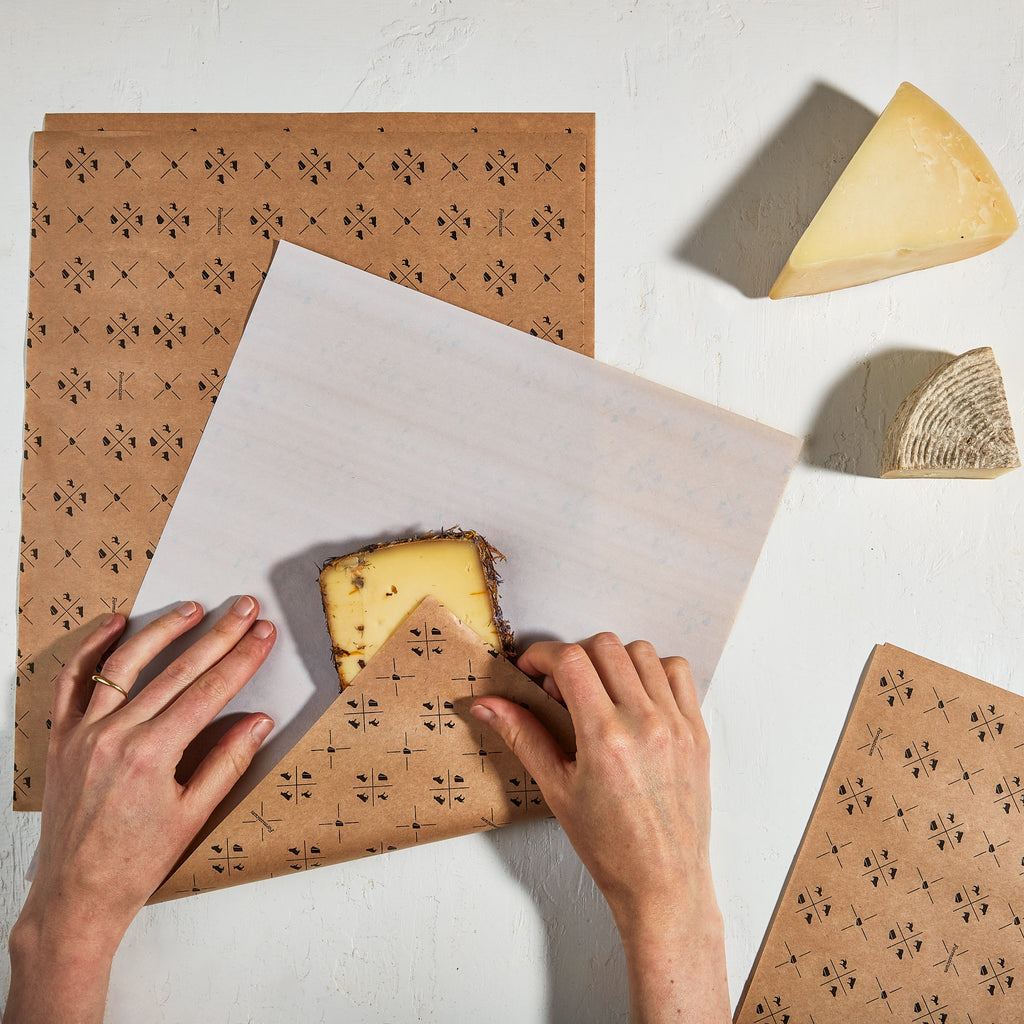
As we wind down from the excitement of the winter holidays, we know that it's important for cheesemongers to take some time to relax, recharge, and recover. If your New Year's resolution was to learn something new, we've got good news for you - we put together a concise list of the topics we've covered on the blog and social media this month. From counter service tips to cheese serving suggestions, we've covered a wide range of topics. So take the next few minutes, grab a cozy blanket and a cup of tea, and read on to find out what the Formaticum team has been up to this month.
Right after New Year's Day, we got to work tackling the age-old question: how long will my cheese last in the fridge? Read this post and watch our short video below to learn more about how to rotate and store your cheese selection to preserve the flavor of your cheese. Moving cheese in a timely manner can promote repeat business and shows respect for the work of cheesemakers.
We wanted to keep the cozy vibes going even after the holidays, so we hosted a Raclette night to provide you with tried and true serving and pairing suggestions for everyone's favorite hot, melty cheese. Read this post to learn more about the history of this iconic cheese and how to maximize your Raclette sales by offering a varied and comprehensive selection in your case.
Wires and hollow knives and offset blades, oh my! The choices for cheese tools can seem endless, but we're here to guide you. Read this post to learn how to perfectly pair different knives and tools with different styles of cheese, and why it's important to carry a sense of pride in your work through every sales interaction. The below video includes tutorials on how to use each of our knives and other cheese tools to get the perfect cut, every time!
You "cheddar" believe we finished the month out with an in-depth discussion about one of America's favorite cheeses. With the variety of cheddars available on the market being almost as vast as the number of cows who produce the milk to make them, it's important to work with your customers to select the cheese that is right for their needs. In this blog post, we discuss how to talk to your customers about cheddar in a way that forms a connection between them, their monger, and their cheese, and hopefully will have them coming back to give you more of the cheddar in their wallet.
Thanks for joining us this month! Check back in February for more service tips, cheese history, wrapping tutorials, and so much more. And don't forget to follow us on Facebook, Instagram, TikTok, and Youtube.
If you have any questions or want to suggest a topic for us to cover in the future, please email emilia@formaticum.com.
Choosing Cheddar: A Brief Guide
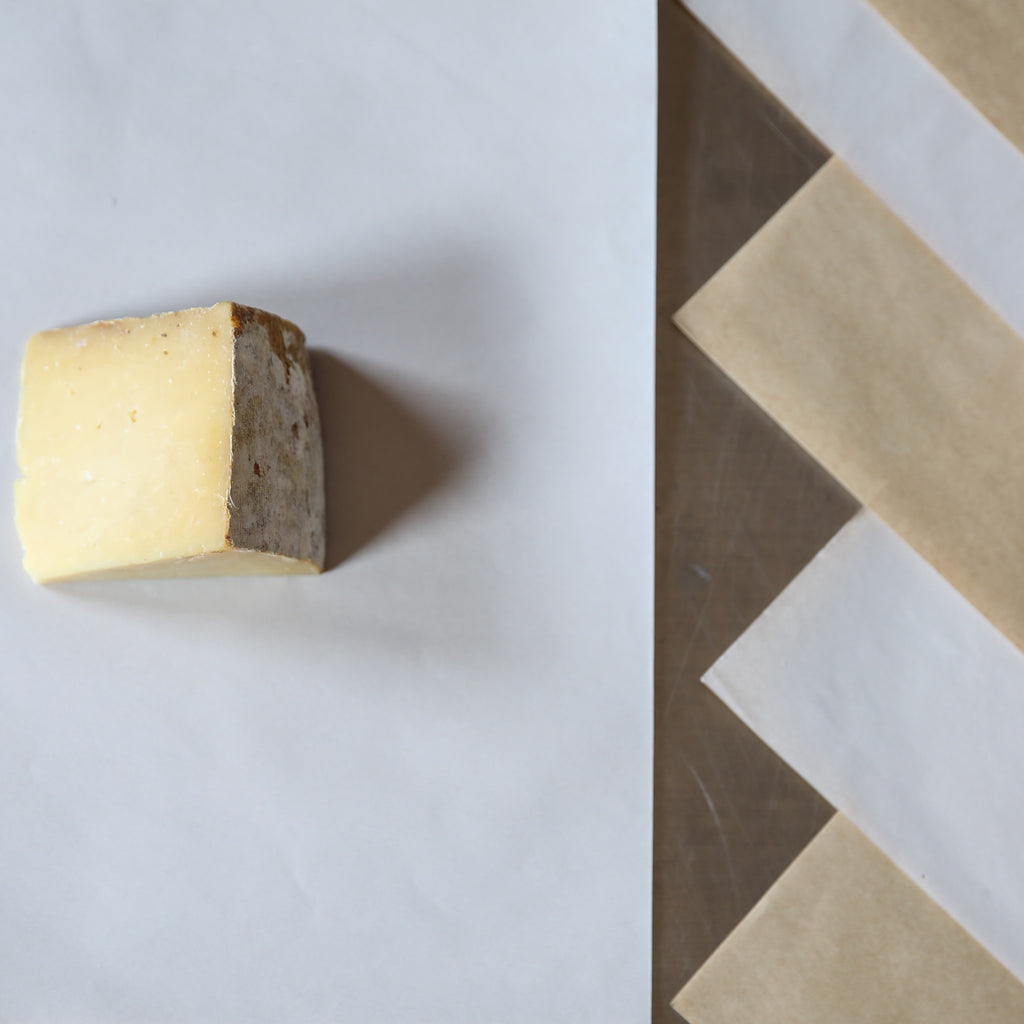
Cheddar was one of the US's first favorite cheeses, and it only continues to grow in popularity. Today, we have a wide variety of cheddar at our fingertips, and each one is as unique as the landscapes on which the animals are grazing. While cheddar originated in Somerset, England (yes, in the village of Cheddar!), the cheesemaking style has since spread all over the world and is beloved by many.
So if it isn't the place of origin, then what makes cheddar, cheddar? The answer is partly in the process - appropriately called "cheddaring". During cheddaring, the curds are cut into slabs and continuously stacked on top of each other on the sides of the vat. This encourages whey expulsion, which also results in the signature texture of many cheddars - crumbly, slightly granular, with visible curds.
Knowing the vast number of cheddars on the market these days, we have to make sure that the way we talk to our customers about cheddar is specific and informative, but not overwhelming to them. We need to make sure that we are providing them with a cheddar that meets their needs and expectations, understanding that they may not have the breadth of cheddar knowledge that we do.
With the flavor profiles of cheddar being as vast as the number of producers, it's always a good idea to start by asking your customer what kind of flavor they are hoping for. You can start with more general questions and use more specific tasting notes to help narrow down the options - Savory or sweet? Grassy or mild? Oniony or nutty? More creamy or more crumbly? Is it for snacking or is it for a recipe? If you have an understanding of the different cheddar offerings at your counter, you can be an effective guide for your customer and help them select the right one for their specific needs. In the process, you are also helping your customer develop their palate and learn more about their tastes and preferences! Taking the extra few minutes to work with your customer in this way creates a connection between you, the customer, and the cheeses and will likely have them coming back to the counter again for more cheese and conversation.

Formaticum News
Our home to share our cheese chronicles and more.
Categories
Recent Posts
Cheesemonger Champions: Team USA's Journey to the Mondial du Fromage 2025
Beyond the Paper: Exploring the Formaticum Catalog
A Cheesemonger's Guide to Formaticum's Bulk Wrapping Materials
Upcoming Events
Connect with Us
Join the Newsletter
Sign up to receive special offers, new product releases, updates from the cheese shop, and more.
